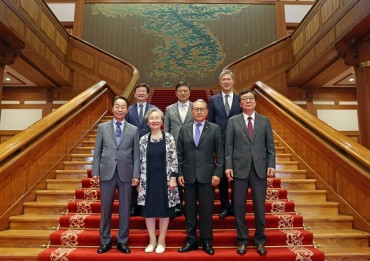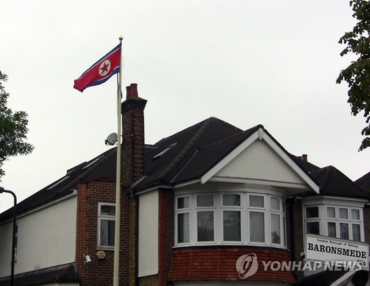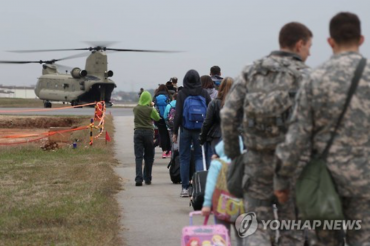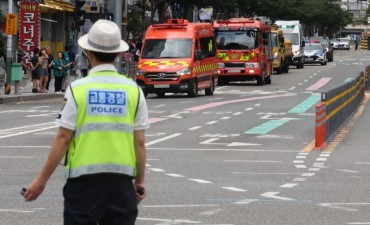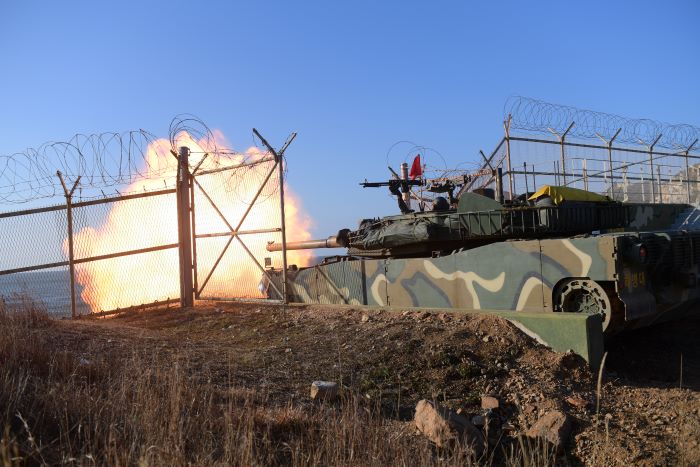
The South Korean military stages live-fire drills on Baengnyeong Island on Jan. 5, 2024, after North Korea fired 120 rounds of artillery shells near the western sea border, in this photo provided by the defense ministry. (Yonhap)
SEOUL, Jan. 8 (Korea Bizwire) – The risk of accidental clashes between the two Korea has risen as buffer zones created under a 2018 inter-Korean military agreement became invalid following North Korea’s conducting of live-fire drills near the western maritime border.
Tension has escalated after North Korea fired around 350 rounds of artillery shells in waters off its west coast between Friday and Sunday, the first live-fire drills near the sea border since December 2022.
On Friday, North Korea fired some 200 rounds of shells in waters near the South Korean front-line islands of Yeonpyeong and Baengnyeong, prompting residents to take shelter and the South Korean military to stage live-fire drills in response.
The Joint Chiefs of Staff (JCS) said the South Korean military will resume artillery firings and drills near the sea and land border, noting Pyongyang’s shellings near the Northern Limit Line (NLL), the de-facto maritime border in Yellow Sea, scrapped the mutually agreed buffer zones.
“North Korea conducted artillery firings in Yellow Sea for three days. As a result, buffer zones that ban hostile acts no longer exist,” JCS spokesperson Col. Lee Sung-jun said in a press briefing Monday.
It was the latest provocations by the North after it vowed to restore all military measures halted under the 2018 pact after South Korea partially suspended the deal and resumed surveillance near the border in protest of the North’s first spy satellite launch in late November.
Under the deal, Seoul and Pyongyang agreed to halt artillery firings and large-scale drills in the sea near the NLL and border area within 5 kilometers on each side of the military demarcation line to prevent accidental clashes.
Since then, North Korea has restored guard posts and forward deployed heavy arms in the Demilitarized Zone, while rearming soldiers in the Joint Security Area (JSA) at the truce village of Panmunjom.
North Korea has also been spotted rebuilding some destroyed guard posts with concrete structures since last month and installing mines on a road connected to the Kaesong Industrial Complex, once regarded as a symbol of inter-Korean reconciliation and exchanges, according to military sources.
The South Korean military estimates the North has breached the accord 3,600 times since its signing in September 2018, a figure that includes minor violations, such as leaving open port holes of coastal artillery.
Among them, 15 major violations occurred in 2022, including the North’s artillery drills in the buffer zones and drone incursions.

Passengers watch a news report at the Incheon Coastal Passenger Terminal in the western port city of Incheon on Jan. 5, 2024. Residents of the front-line islands of Yeonpyeong and Baengnyeong were advised to take shelter after North Korea fired a barrage of artillery shells near the western maritime border. (Yonhap)
As corresponding measures, the South Korean military has rearmed security guards in the JSA and made preparations to restore some destroyed guard posts. Port holes of coastal artillery have also been left open, according to military officials.
Yang Moo-jin, president of the University of North Korean Studies, said the North’s artillery drills seem to be aimed at showing its willingness to restore military measures halted under the accord and test Seoul’s response.
“North Korea may want to show off that it is taking the lead in military issues on the Korean Peninsula at the beginning of the new year and demonstrate its willingness to implement confrontational moves announced in the year-end party meeting,” Yang said.
During a key year-end meeting of the ruling Workers’ Party, North Korean leader Kim Jong-un said the two Koreas are “two states hostile to each other” with no chance of unification, ordering the military to step up capabilities.
Observers expressed concerns over the growing risk of accidental clashes near the sea border this year as Pyongyang may want to divert U.S. attention to the Korean Peninsula ahead of the U.S. presidential election in November.
“As the United States may find it hard to focus on international issues ahead of the presidential election, North Korea, confident in its nuclear capabilities, could once again stage provocations in the Yellow Sea,” Cheong Seong-chang, a director at the Sejong Institute, said.
Naval skirmishes between South and North Korea took place near the western maritime border in 1999, 2002 and 2009.
In 2010, North Korea fired a barrage of artillery shells on Yeonpyeong Island, killing two South Korean Marines and two civilians.
The North has contested the legitimacy of the NLL — drawn unilaterally by the U.S.-led U.N. Command after the 1950-53 Korean War — in recent decades and has demanded that it be redrawn, a request the South has rejected.
(Yonhap)



